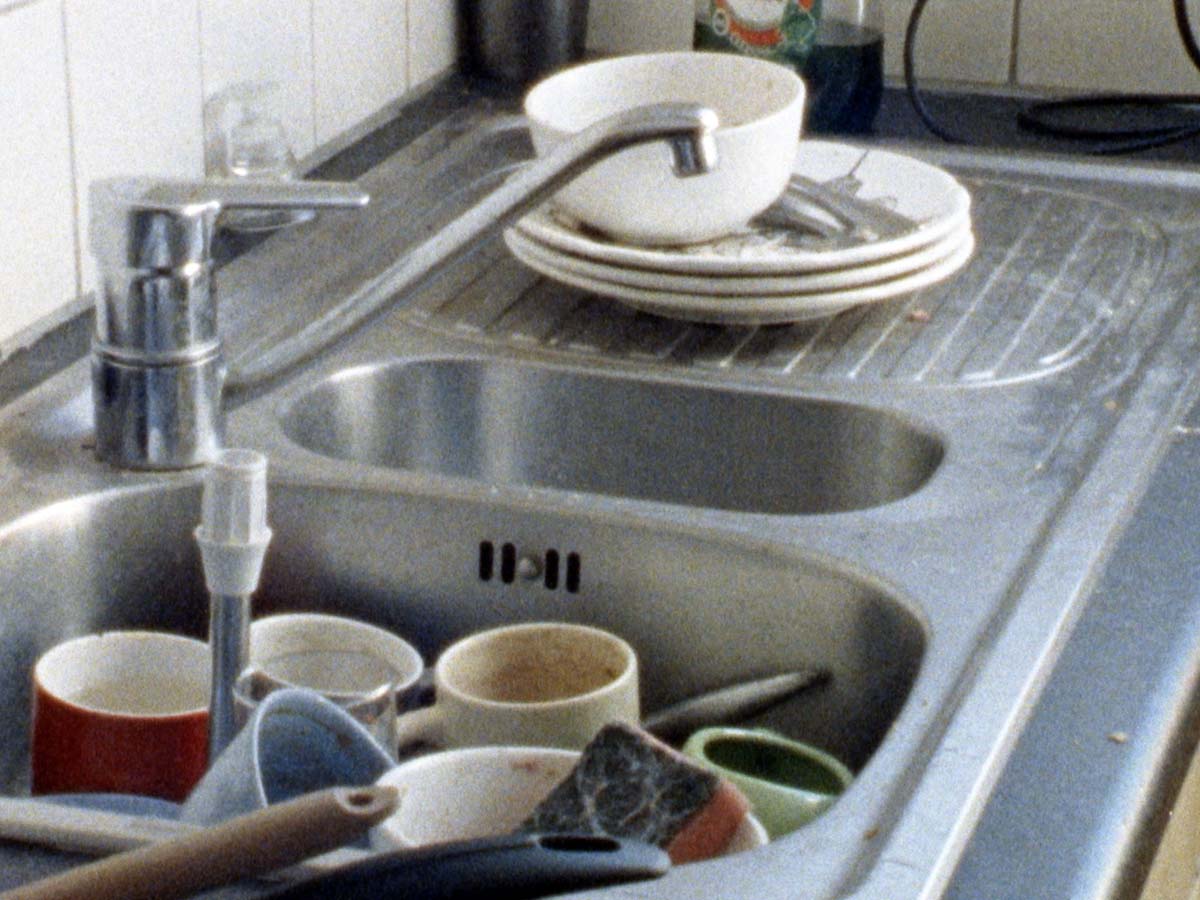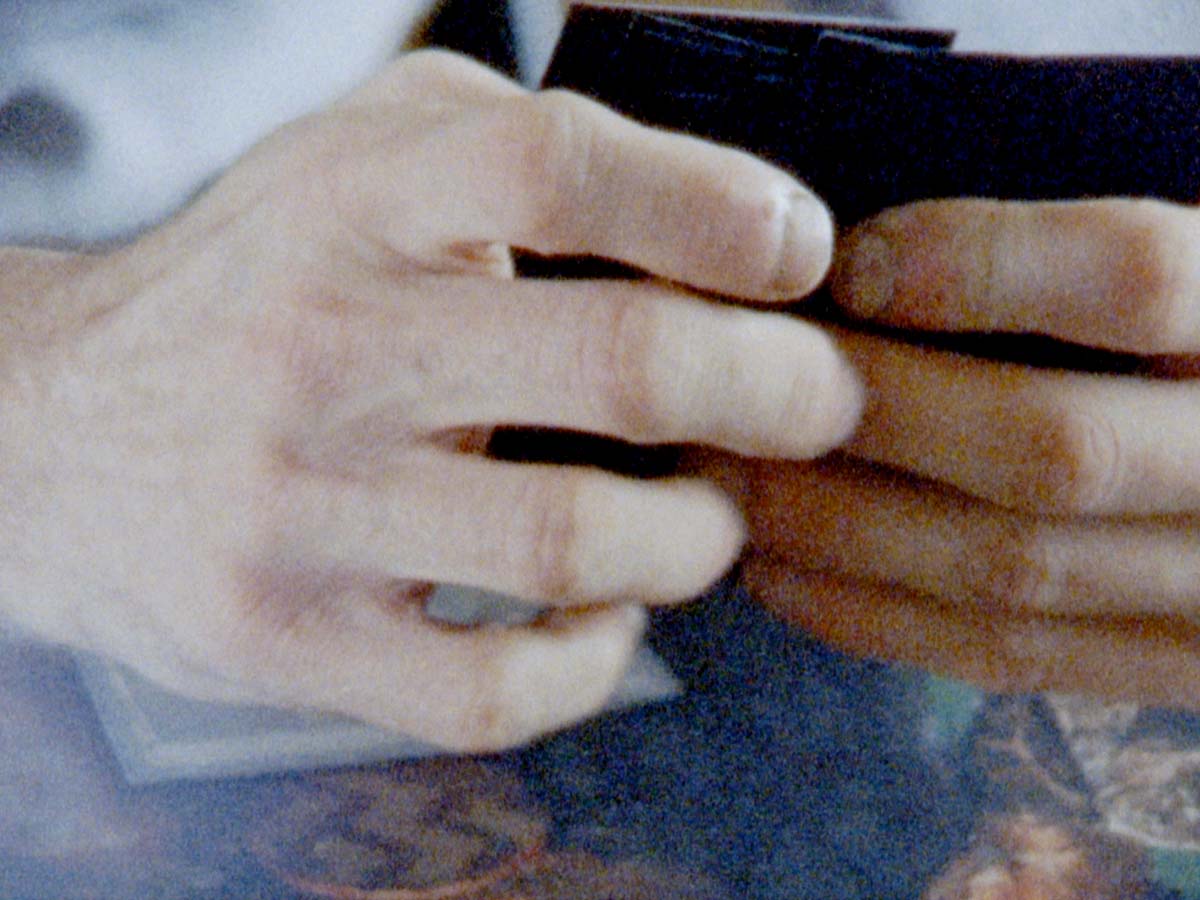
The Space That Surrounds Us
Portraits of proximity: Chloë Delanghe’s Magic, a portrait of Joris
The camera measures distances. Its focal point coincides with an object in the room and through the emptiness around it, something becomes visible. It is an obvious observation, yet this essential aspect of photography is important in the work of Chloë Delanghe. Her work is situated on the crossroads between intimacy and distance. She makes portraits, although most of her work does not consist of faces but of objects that serve as a pars pro toto for the person, usually a family member. In this way, the photo entitled Mum’s Rose (2015) depicts a flower made from kite paper and a strip of fabric. Both this simple object and its title hint at a family relationship, yet also at a loss: the suspicion of distance between mother and daughter. The fragility of the flower evokes a painful absence. Through the tangibility of the object, the distance to the person it represents becomes overwhelming.
Works like Mum’s Rose make clear what Chloë Delanghe’s main preoccupations are. The photos of a rose of paper, small notes and souvenirs evoke a universe in which absence is part of the loving feelings that Chloë has for the people she portrays. This is also made tangible in the photo she took in 2011: Mum, Amsterdamstraat. It shows a room with a roof window. The light enters through the window, tempered by a huge Japanese fan. The photographer’s mother stands in front of this shaft of light, a dark silhouette in a room that is more reminiscent of a cocoon than a room. Notes and pillows are strewn around her, things that reveal the life in this room; Sally has her head bowed; she does not look into the camera. But Chloë does look at her, and together with her, the viewer of the photo.
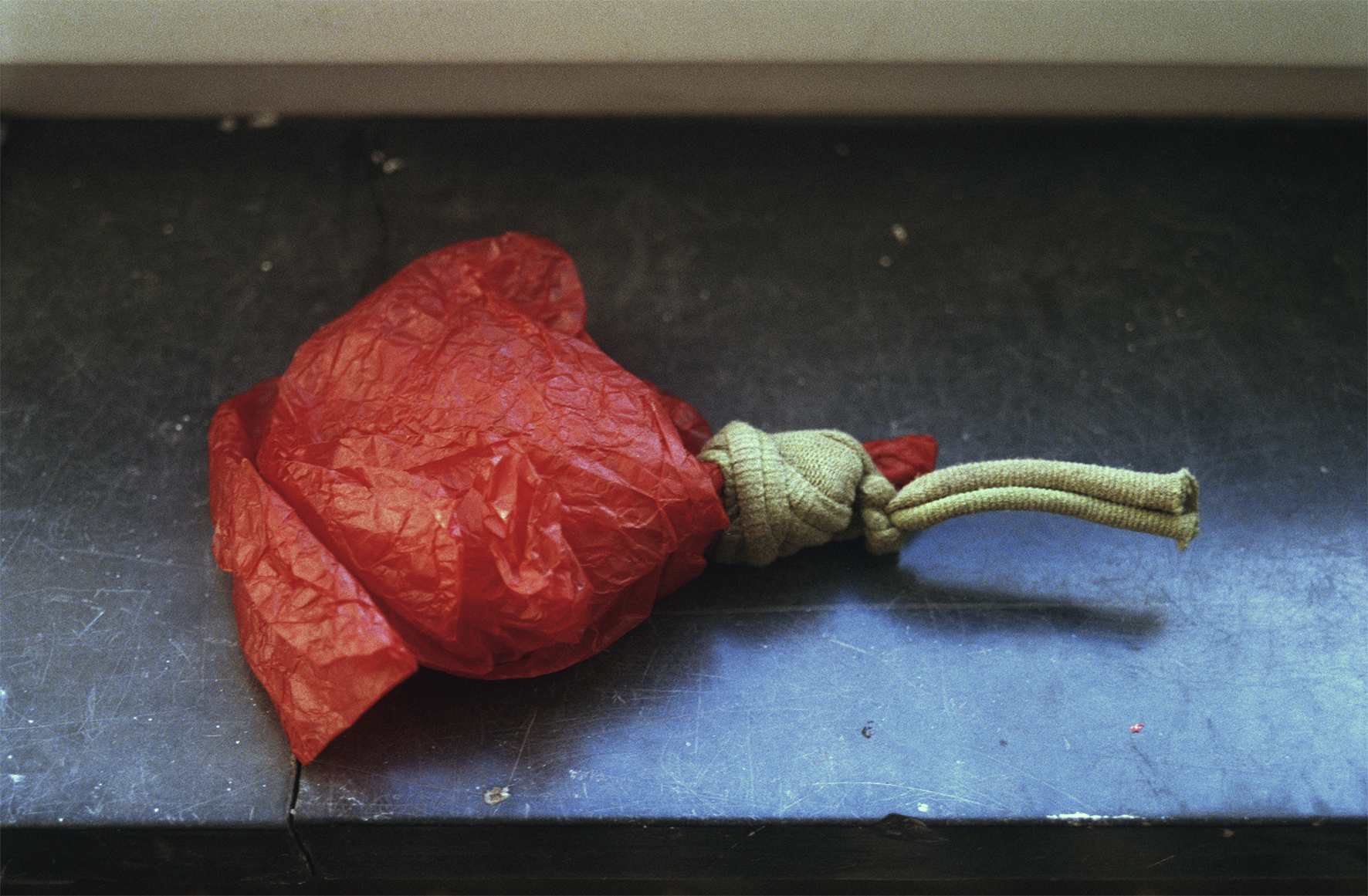
This photo intrudes into the intimate loneliness of Chloë and her mother: an outsider is allowed to gaze into the cocoon that she and Sally shared with each other. The photo is like a cut, yet this is what creates the artwork. At the same time, danger is looming. The outside world penetrates the moment through the camera and makes the portrayed person vulnerable: she becomes defenceless against a gaze that can touch and affect. Reduced to a mere subject, the person portrayed is powerless in her position of surrender. She exposes her being without being able to defend, cover or explain herself. This is the true power of the photographer. He has power over the way in which the other is delivered into reality. In the opening of this ‘cocoon’ lurks the danger that the trust that was shared in the moment will dissipate and disappear.
In 2014, Chloë Delanghe wrote a letter to her mother after she had told her that she no longer agreed with her showing the photos she had taken of her over the years. In this letter, the artist tries to put into words how she relates to the people she portrays. She writes how she can only take a photo of someone in a moment of closeness, no matter how fleeting it may be. Chloë wonders how she can relate to her mother as a photographer during those moments when she is vulnerable.
“I would feel like a thief, creeping in when my victim is unaware and fragile. But [...] it became equally clear to me the immense power that the sitter has. It is not ‘all on me’. The moment you allow me to make an image of you it’s an exchange of power, even if not an equal one.”
Chloë Delanghe’s work emerges from a relationship between two people: Chloë takes the photo, while the ‘model’ makes the photo. The picture is the result of an exchange, a dialogue between photographer and model. But it is also directed at the spectator. Precisely because the photos are so fragile, the viewer responds to them with caution; he or she carefully approaches these images, as if they were a small animal. Chloë finds it important to give the fragility of images a place. She says: “We deal with images much too lightly. Many people view and approach an image too lightly. We must take care of our images. Away from the sentimental, I invite spectators to look attentively.”
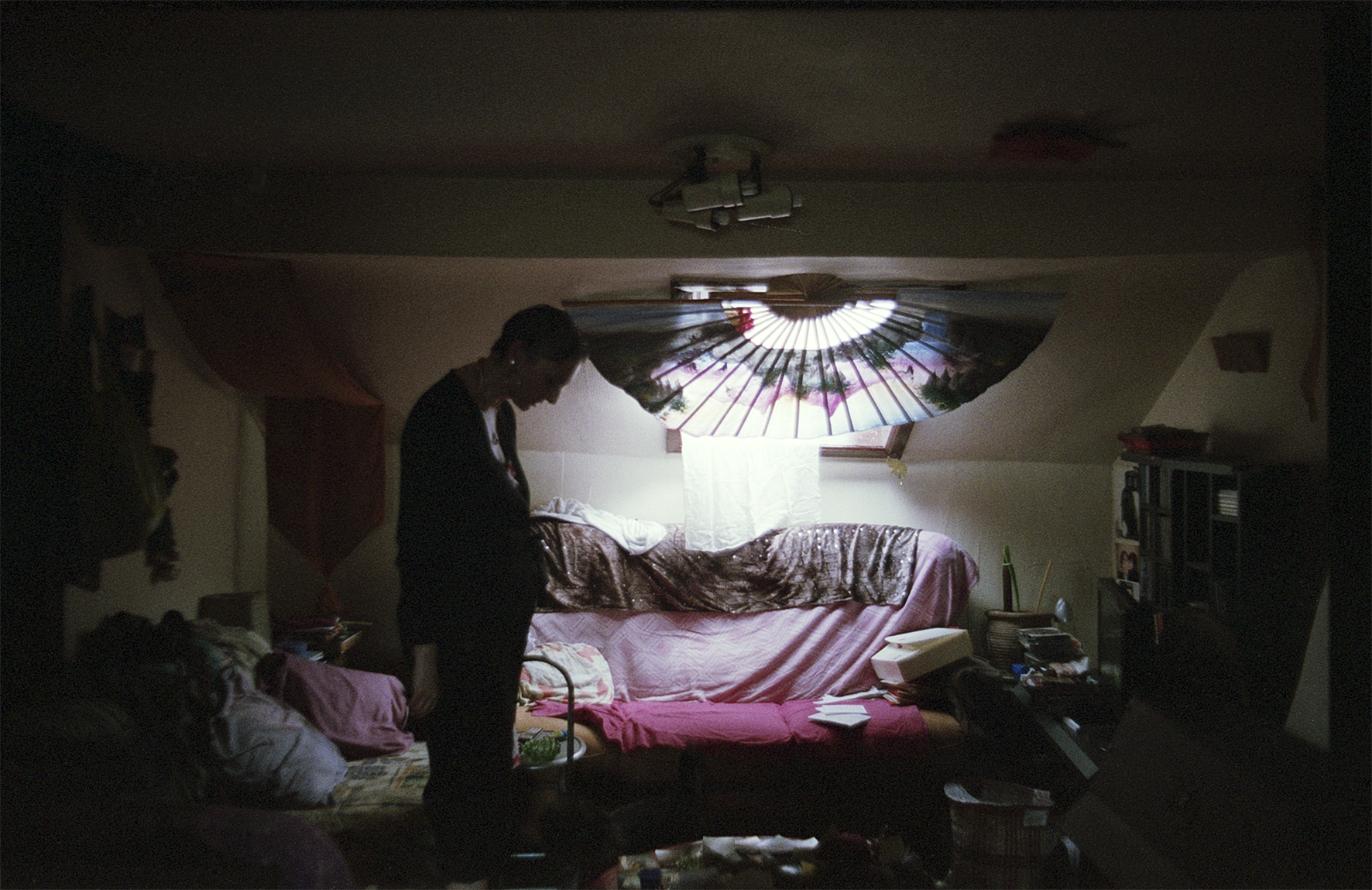
Her new film Magic, a portrait of Joris, which she is shooting during her residency in FLACC Genk has her brother as its subject. She films him while he plays the card game Magic: The Gathering. The cards evoke a familiar fantasy world, like a remnant from their childhood they experienced together. Between the two of them, Magic works like a lightning rod: when Joris’ hands are busy with the cards, he gives Chloë the space to be busy with her camera.
The card game is not only a pretext for making a portrait; it is also a pretext for Joris to be with his friend. He prefers to communicate in roundabout ways. By playing cards, he can escape the gaze of the other. His eyes shyly focus their attention on the game at hand. The film images Chloë showed me are steeped in this immense shyness. The images are soundless and filmed on celluloid that is blurred by light spots and dust. Joris’ body appears and disappears into the light, as if he is too modest to become fully visible. Chloë as it were intercepts his image, as if wanting to touch a body that is both close and infinitely distant.
She also showed me images of planets she filmed in the astronomical museum in Brussels, where scale models of planets and galaxies are on display. Their pale roundness turns them into amorphous bodies, humbly held in place by a papier-mâché stand or suspended from twisted steel cables. They are objects that invite us to imagine the unimaginable. The astronomically large, the inhumanly distant, the unthinkably hot, the absolutely untouchable. Just like Magic, they encourage the creation of an imaginary world.
To Chloë, the most pivotal moment in the film is actually a very everyday scene. We see how Joris is in the kitchen, making a sandwich. During the filming, a touching emotion emerges: the one makes a sandwich while the other looks at him and films him. It is these moments, the making of a sandwich, brushing one’s teeth, folding the laundry, in which domesticity can become loaded with meaning. These moments are the most vulnerable because they make up the fragile fabric of life. At the same time, these are the moments that rarely turn into memories. Even while you are standing in the kitchen, the memory of that moment when you were making that sandwich disappears. These moments bring about a question that Chloë poses time and again: “In what ways can we hold on to moments that will be irrevocably lost?”
In Magic, a portrait of Joris, images from different times come together. To Chloë, the film is about desire. “The moment when you think you can hold on to a moment, it will slip away.” Images her father made years ago play an important role in the film. The images are frayed; the VHS tapes have become worn out over time. Geert films his son playing a computer game. Joris is sitting in the living room that is full of photos, boxes and collections. These seemingly trivial objects reveal a shared life, the things that are difficult, that are wrong. “My father makes things disappear from view, because he himself keeps slipping away. Contrary to him, I myself try to hold onto things too much, so that they slip away from me as well. It is not the extreme situations that prevented our family from functioning that are the most painful. But rather those small moments that we could no longer share with each other. What I do in my work is to create a time in which we can be together, something that was sometimes not possible in the past. I claim time: I reclaim the moments that have been taken away from me. “Part of this is an internalisation of these old images which I effectuate by pulling them back into the now. By making a connection between images of today and images of the past, different levels of memory are brought together.”
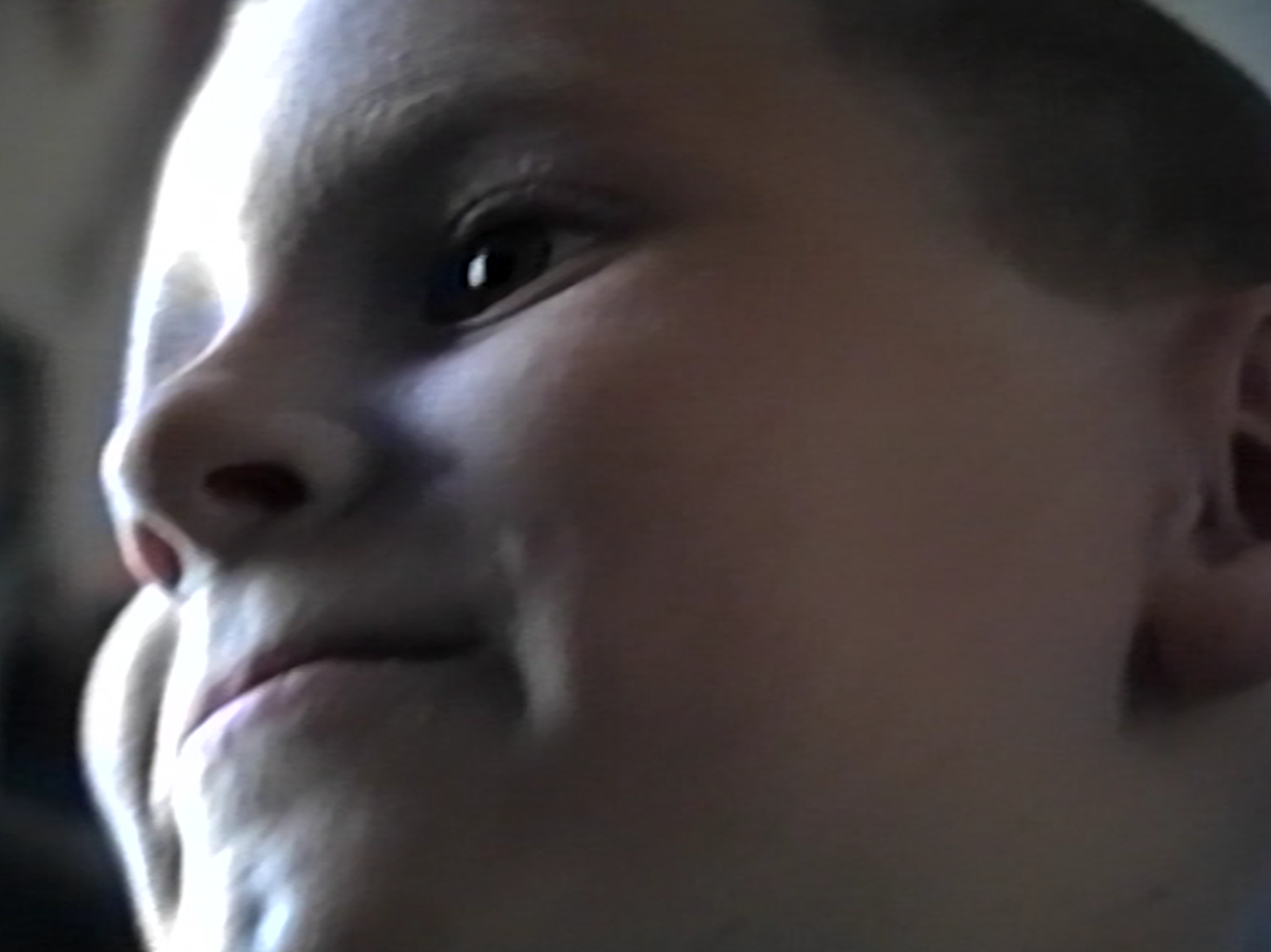
Her choice to shoot with a Super-8 camera with old film stock is closely connected with this idea. The images her father made years ago have a specific materiality that is different from Chloë’s images. There are two different textures that each suggest their own time frame. Super-8 is not digital like video; the images have a body. The game Joris plays is not a digital video game either, but a game with cardboard cards. The celluloid images resonate with the materiality of Magic.
In addition, the camera brings the action of filming to the fore. The sound of the rattling camera makes filming in secret impossible. In this sense, it forces her to be honest: both she and her subject know when she is recording. It is impossible to steal unguarded moments.
There is also the aspect of the amateur filmmaker that plays a certain role. Because of their ease of use and low price, Super-8 camera were mostly used by amateurs to record their own lives. Although Chloë sees herself as a professional photographer, she calls herself an amateur filmmaker; She was not trained as a filmmaker, which gives her the freedom to follow her intuition. She sees her film as the “home movie” of an amateur, someone who loves the medium and who loves her subject.
Although Chloë Delanghe’s work starts form a mental state, she does not in any way want to give the impression that her work is a processing process. Ultimately it is about the search for a form. “I love colour. I love my family. That’s enough.” Through textures, shapes and colours, reality appeals to her. She finds a beauty that is also callous, in which sadness and love can exist in the same moment. “In a photo, I look for the capacity to cause pain. To open something up.” When an image embodies multiple readings, it transcends its value as a souvenir, as a ‘memory object’. A sort of magic is created that is preserved in the photo, which releases itself from lost time.
This text was previously published in FLACC magazine (now called Jester) and is republished here with their permission, and that of Nina de Vroome.


